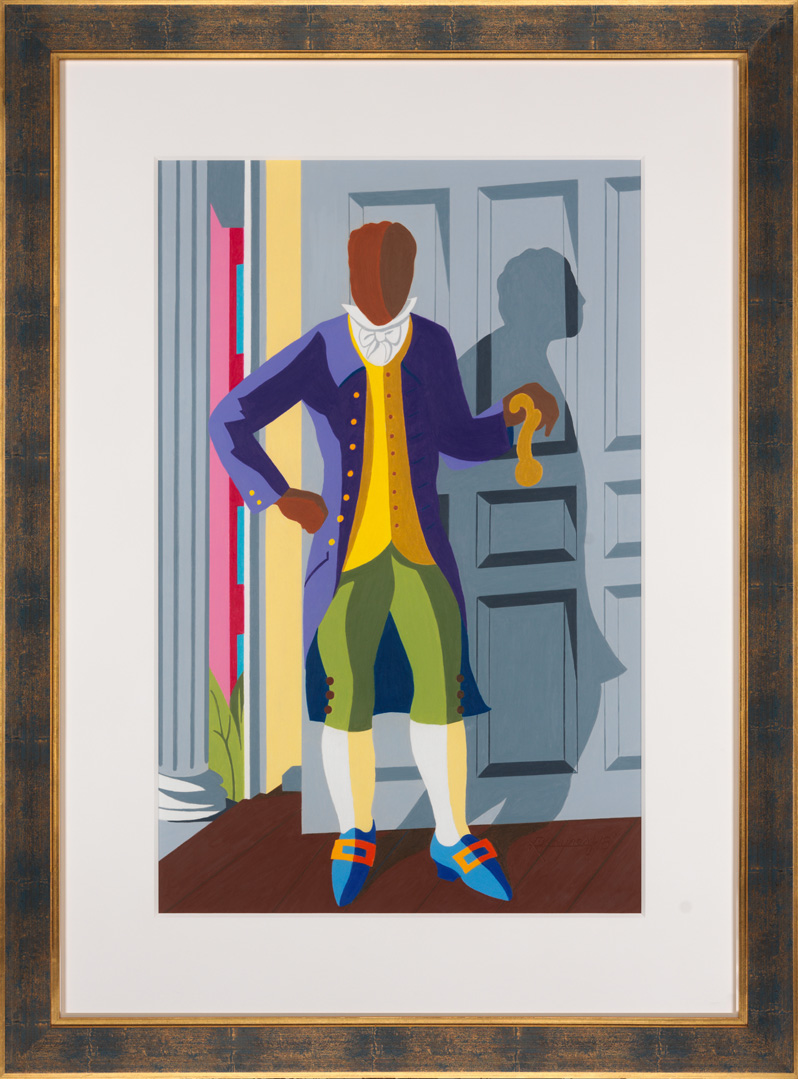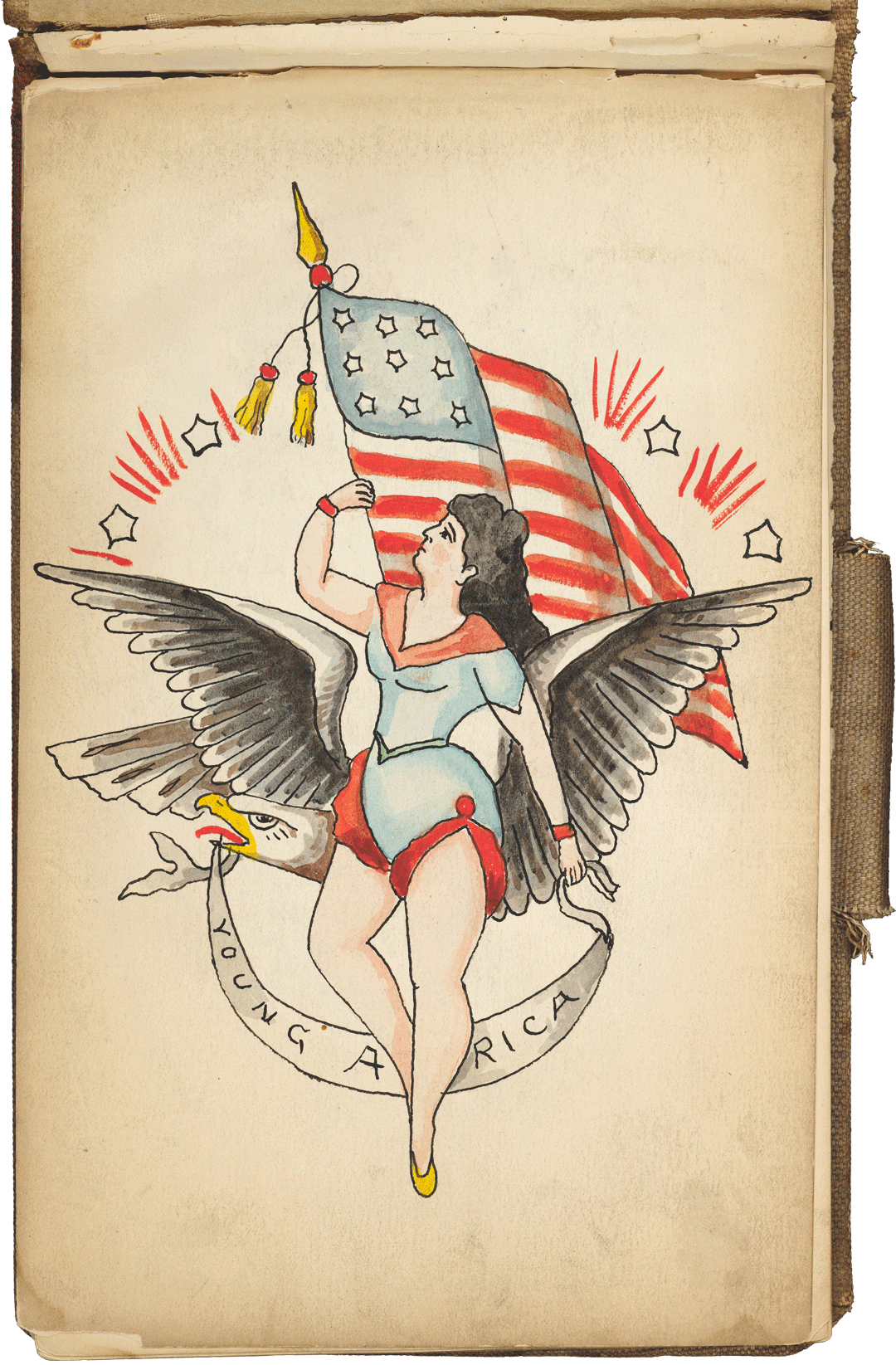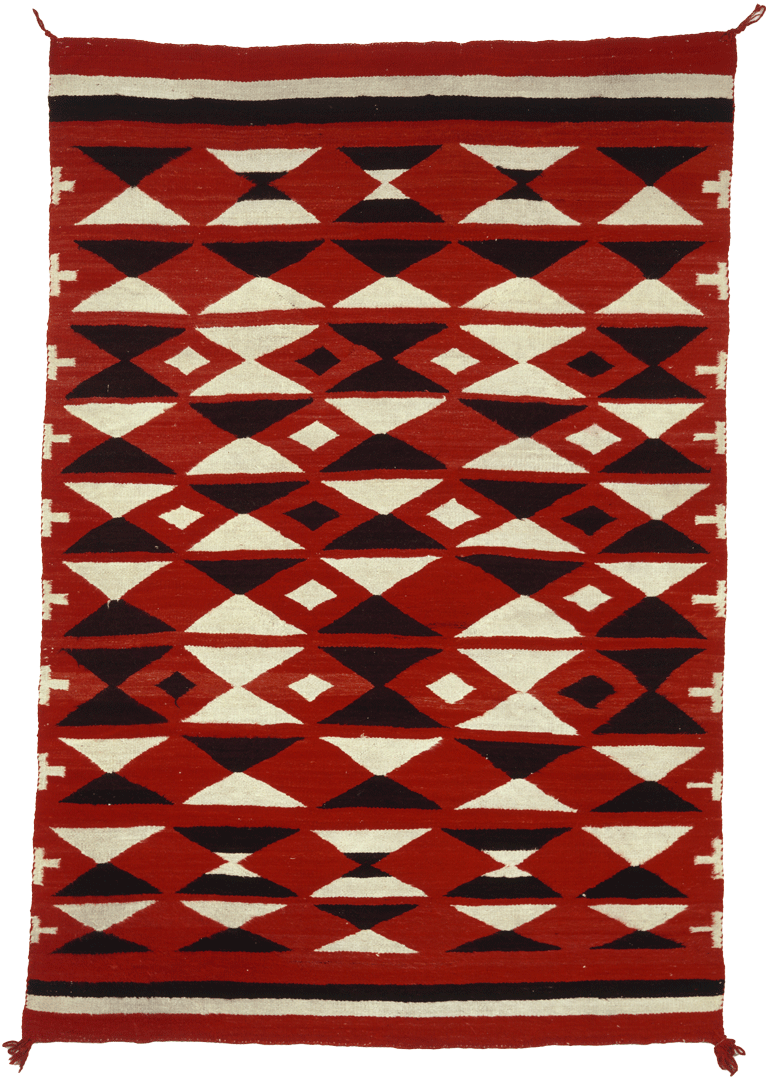Historic New England envisions the Haverhill Center for Preservation and Collections as a catalyst for a global-national-regional-local arts and culture district in downtown Haverhill, Massachusetts.

A BOLD VISION
Explore living archives, state-of-the-art storytelling, and pioneering exhibitions. Experience dynamic installations and performances by world-class artists breaking new creative ground. Expand your knowledge with hands-on learning opportunities from top innovators and makers. Get excited.
Historic New England will evolve its downtown Haverhill location to unprecedented visitor and exhibition spaces and partner to develop residential, innovation, hospitality, and dining facilities. The Haverhill Center will support an improved streetscape, including expanded public art, lighting, signage, and green space.
This cultural district will serve as community catalyst, strengthening local and regional businesses, arts, environmental, and social institutions and significantly drawing new visitors and revenue to the area.
“We envision collaborating with the community to develop sustainable, more livable, resilient, and dramatically improved amenities, anticipating that the impact of the downtown cultural district will reverberate internationally.”
—Vin Cipolla, president and CEO, Historic New England
EXPLORE THE COLLECTIONS
Historic New England’s collection includes more than 125,000 objects and over 1.5 million archival documents. From teddy bears to tattoo flash, there’s something for everyone! To understand the breadth of the collection and the many stories it contains, you can explore a small sample below.

Cyrus Bruce, free man, formerly enslaved, was known for his dapper appearance when he worked at Langdon House in Portsmouth, NH in 1783, yet when artist Richard Haynes embarked on painting his portrait in 2018, no image of Bruce existed. Haynes created this interpretive portrait of Bruce in an artist's residency and exhibition, A Life in Color: Two Cultural Makers, Centuries Apart at Historic New England’s Langdon House. “I have the opportunity to capture the image, the portrait of an unknown man and through this, together, we are going to be cultural keepers and makers. We are going to share the black heritage, the forgotten history, through art.” –Richard Haynes Jr.Between Two Worlds
Learn more about how Richard Haynes creates a portrait

Historic New England Haverhill Center is located in one of the largest former shoe factories in Haverhill. In 1900, 40% of the country’s shoes were manufactured in Massachusetts and Haverhill—“the Queen Slipper City”—was the third largest shoe manufacturing city in the United States. Adapting to changes in fashion and with the advance of organized labor, the Haverhill shoe industry continued to flourish. In 1941, a profile of Haverhill boasted the city as the largest manufacturer of women’s shoes in the US, with over fifty shoe factories in the city, along with other associated businesses in wooden-heel manufacturing and leather tanning. Queen Slipper City

Hairwork, the weaving of hair into mementos and jewelry, like the bracelet seen here, was popularized in the nineteenth century as a way to celebrate love and friendship. The fashion later evolved into memorializing the dearly departed. Once the purview of skilled craftspeople, hairwork became a Victorian pastime, with instruction manuals and patterns published for at-home use.
Memento in Hair

Massachusetts banned tattoos in 1962 when a hepatitis break-out in New York was linked to tattoo needles. The ban didn’t stop people from getting tattoos; the whole business went underground, giving tattoos the aura of cool. Tattooing has been used by Indigenous Americans for thousands of years and for different cultural meanings—tribal identity, life milestones, and healing.Banned in Boston

In the early years of the nineteenth century when there were few opportunities for genteel women to earn a living, Clementina Beach and Judith Saunders ran one of New England's elite schools for girls, located in Dorchester, Massachusetts. We do not know whether grateful students commissioned this portrait by Gilbert Stuart (1755-1828) or Beach commissioned it herself. In either case it is an unusually early portrait of a woman who was painted not because of who her family was but for what she herself had achieved. While the Mrs. Saunders and Miss. Beach's Academy is relatively well known, little is known about the private lives of the two women. However, Judith Foster Saunders’s great-nephew makes clear that their relationship was one of loving companionship:
"...the perfect harmony that existed between them, through so many years, which grew even more affectionate in their old age, is a pleasant memory to those who witnessed it."In Her Own Right
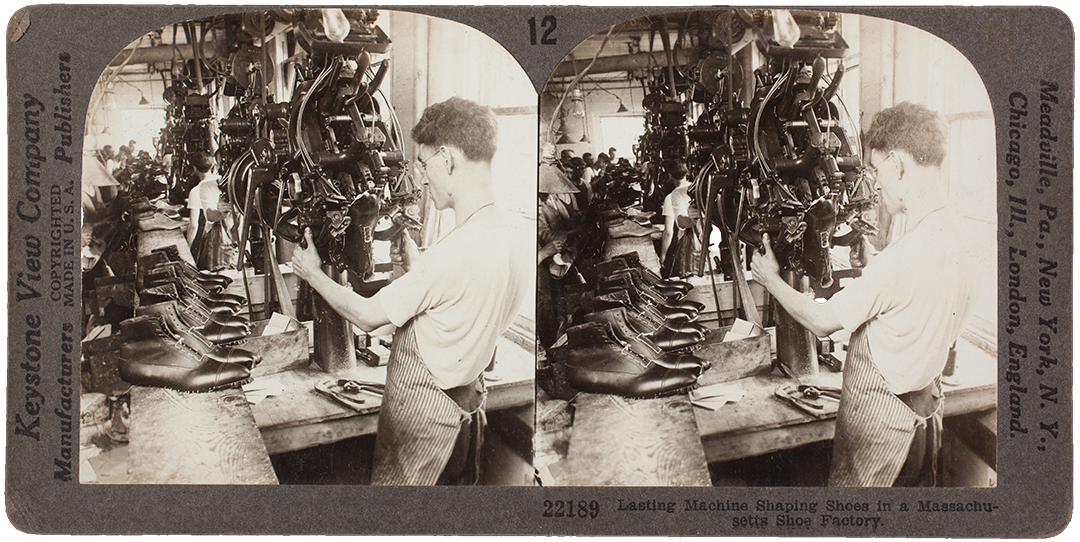
Baldwin Coolidge (1845-1928) was a leading professional photographer in New England from the late 1870s until 1917. With his large-format cameras, he recorded urban life and architecture in Boston and other New England cities, coastal and marine views in Massachusetts and Maine, pastoral scenes in New Hampshire, and events such as floods, fires, and storms throughout the region. He also worked for thirty years as staff photographer at the Museum of Fine Arts, Boston. Coolidge maintained a summer studio on Martha’s Vineyard, Massachusetts. His photograph of the Wreck of the Warren Sawyer was made on Nantucket, Massachusetts, in 1885. He documented the Stony Brook Flood in Roxbury, Massachusetts, in 1886.Eye for the Big Picture

Vermont-born sculptor Hiram Powers moved to Florence in 1837 to solidify his training. His studio there attracted a loyal clientele of travelers from New England, among them Nathaniel Hawthorne, who rhapsodized when he saw this bust: “A light seems to shine from the interior of the marble and beam forth from the features.” The figure is Psyche, a Greek goddess personifying the human soul. The sculpture is on view at Historic New England’s Codman Estate in Lincoln, Massachusetts.Soul Inspired

This Navajo rug was purchased in 1906 by a visitor to Wyoming. In the early twentieth century, Indigenous American goods became popular due to both an interest in handcrafts and, ironically, the subjugation of Indigenous American tribes. Indigenous Americans, deprived of their land resources, created successful enterprises with craftwork, including rugmaking and basketry. This rug is on view at Historic New England’s Castle Tucker in Wiscasset, Maine.Adaptive Enterprise

The Paul Revere Pottery sprung from a literary club for Jewish and Italian immigrant girls of high school age, the Saturday Evening Girls Club, started by librarian Edith Guerrier, her partner, Edith Brown, an artist, and philanthropist Helen Storrow. Guerrier and Brown established the pottery business so that the girls could earn income. The items produced in the Paul Revere Pottery were in the arts and crafts movement-inspired pottery tradition characterized by simple shapes with boldly colored glazes and stylized images of nature.Girl Entrepreneurs
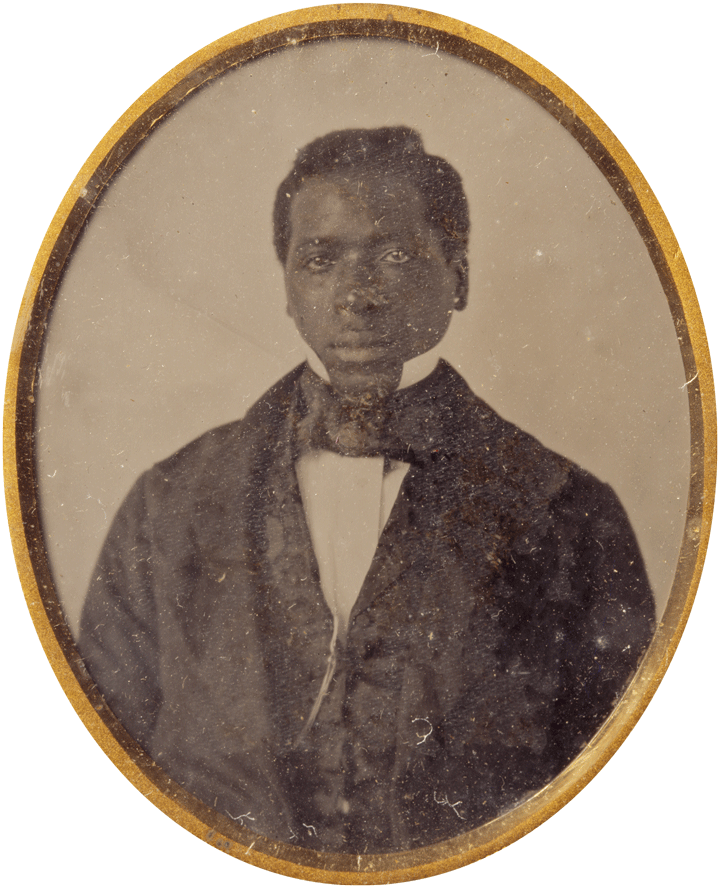
Captured in eastern Africa at about the age of ten, Pedro Tovookan Parris created this autobiographical watercolor on linen fabric showing his progression from captivity as an enslaved African to his life as a freedman in America. We have no way of knowing the circumstance under which Pedro drew this picture of his journey, but it seems clear he was driven to record his life. Perhaps, forcibly separated from his family, the stories and watercolors in some small measure served to remind Pedro who he was.Flight to Freedom

Walter Gropius, founder of the German design school known as the Bauhaus, was one of the most influential architects of the twentieth century. Escaping Nazi Germany, he designed Gropius House as his family home when he came to teach architecture at Harvard’s Graduate School of Design. Historic New England preserves his home in Lincoln, Massachusetts, and many of the household objects he designed.Icon of Modernism
ENGAGE WITH US
upcoming events
You can help shape the vision for the Haverhill Center. Join us at community events around the city that showcase exciting stories, creative activities, and compelling traditions. Please come see us to learn more about our vision for the Haverhill Center and become part of the story.
Saturday, July 8: Haverhill Farmers Market
Sunday, July 23: Merrimack Valley Black and Brown Voices Black and Brown Owned Market at Historic New England Haverhill Center
Saturday, July 29: Haverhill Farmers Market
news
Historic New England Haverhill Center
Historic New England is the largest cultural real estate presence in Haverhill, Massachusetts. Our campus is conveniently located approximately 35 miles north of Boston in Haverhill’s historic downtown and easily accessible by Amtrak, MBTA Commuter Rail, and three major highways.
SUPPORT THE VISION
To learn more about the Haverhill vision and how your philanthropy can have a transformational impact, please contact Elliot Isen, Haverhill Initiative campaign officer, at [email protected]
CONNECT WITH US
Let us know your thoughts
We’d like to hear from you!
STAY UP TO DATE
Sign up for updates on the Haverhill Center project
ABOUT HISTORIC NEW ENGLAND
Historic New England, founded in 1910 as The Society for the Preservation of New England Antiquities, is the largest and most comprehensive independent preservation organization in the United States, welcoming hundreds of thousands of visitors each year to 38 exceptional museums and landscapes, including several coastal farms.
Historic New England operates the Haverhill Center and has the world’s largest collection of New England artifacts comprising more than 125,000 decorative arts and objects and 1.5 million archival documents, including photographs, architectural drawings, manuscripts, and ephemera. Engaging education programs for youths, adults, and preservation professionals and award-winning exhibitions and publications are offered in person and virtually.
The Historic New England Preservation Easement program is a national leader and protects 121 privately owned historic properties through the region.

